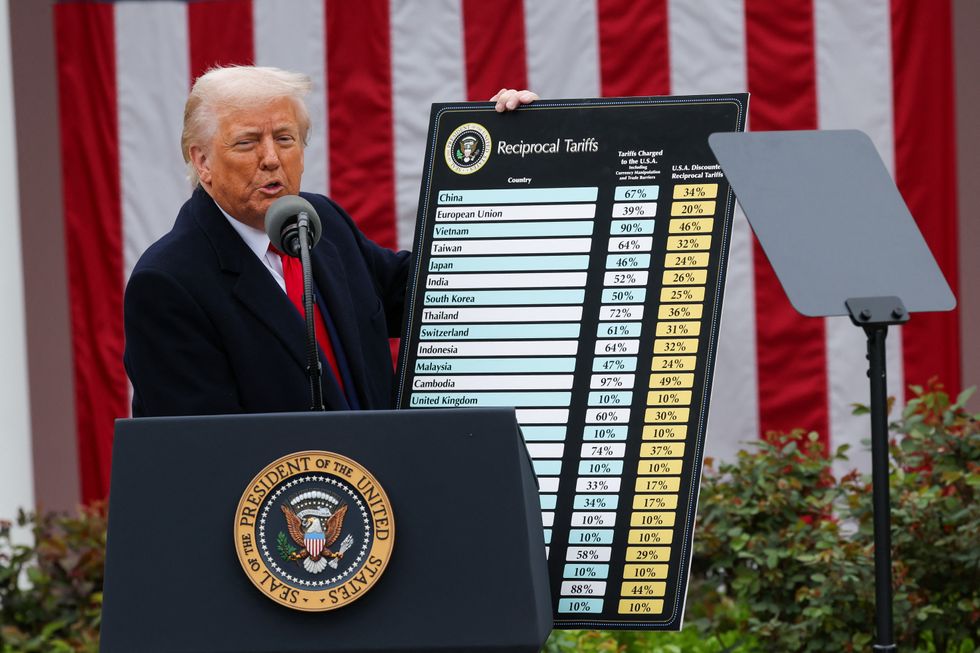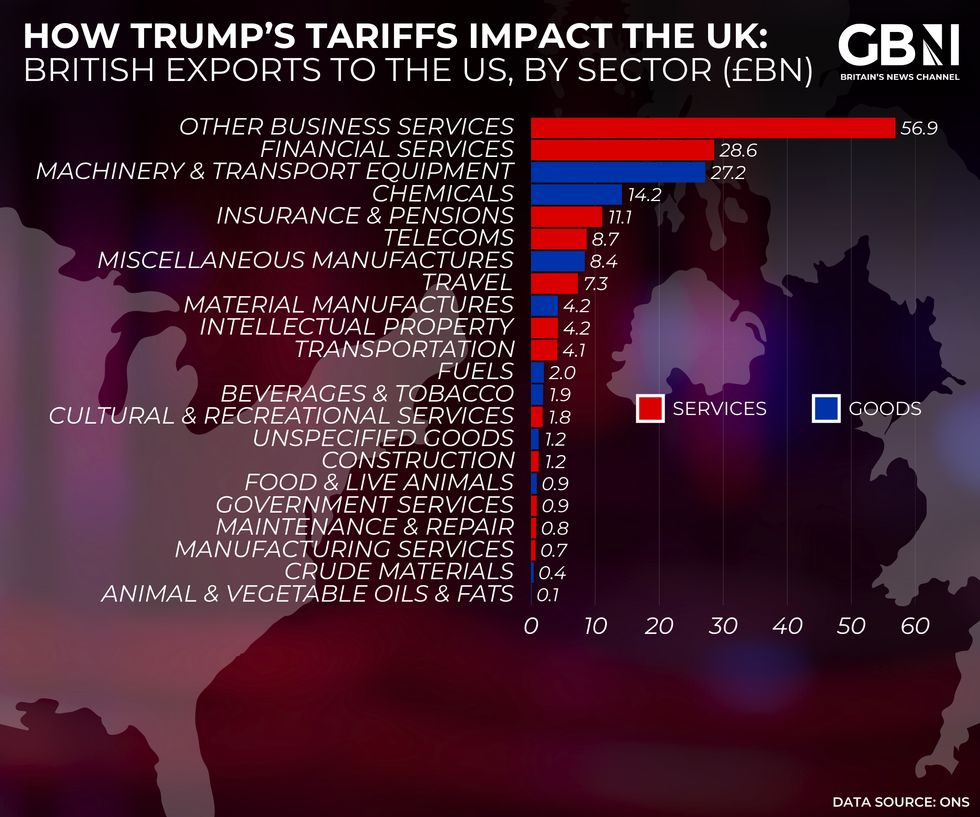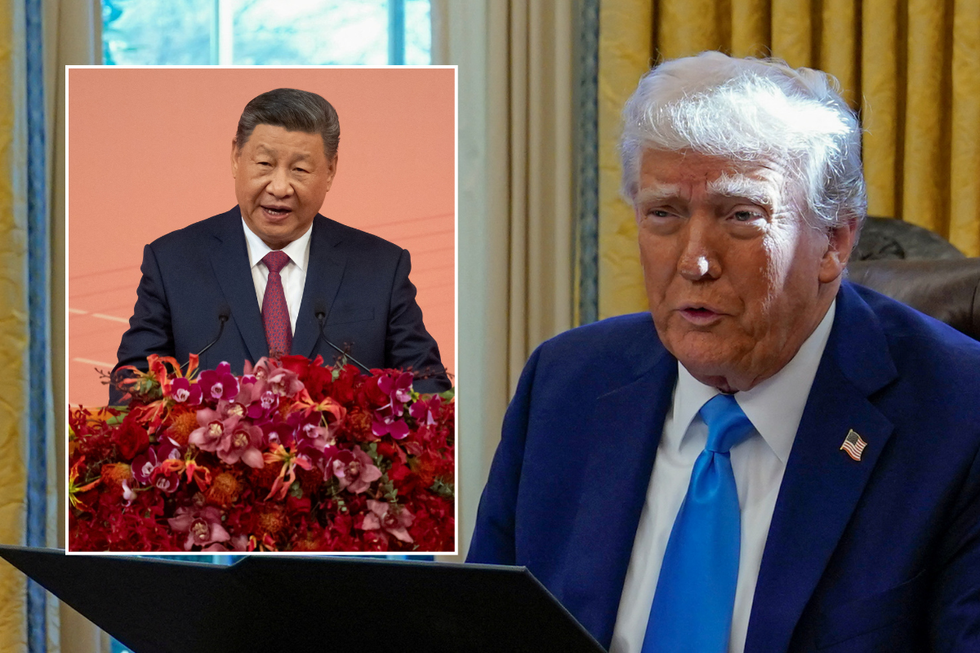How Trump’s Tariffs Could Hit the UK Hard – From Whisky to the Weekly Shop
GBN
OPINION: Former Conservative Cabinet Minister Anne-Marie Trevelyan reveals Trump's tariffs are not just about rebuilding US manufacturing
Don't Miss
Most Read
Trending on GB News
The Trump administration’s new tariffs, introduced with the “Liberation Day” fervour of a populist rallying cry, will no doubt prove to be a defining feature of his economic policy.
Much like mercantilist policies of old, these tariffs are aimed at shielding domestic industries from the onslaught of foreign imports which have allowed the degradation of the US manufacturing base.
After a century of tariff reductions globally the whole world had seemingly got used to the fact that tariffs were not part of the modern globe trade.
But that just isn’t true, as I discovered first hand when negotiating trade deals on behalf of the UK Government. Many countries have strong protectionist measures in place to protect their domestic industries – especially agriculture, but many other sectors too.
 Unveiling a list of the upcoming tariffs, Trump said levies will not be fully reciprocal rate but will instead be half the tariff rate for some countriesREUTERS
Unveiling a list of the upcoming tariffs, Trump said levies will not be fully reciprocal rate but will instead be half the tariff rate for some countriesREUTERSThe EU has a 10% tariff on imported cars and uses quotas to limit imports without tariffs on wide-ranging agricultural goods from meat and dairy to sugar and cereals.
These are managed on a first come first served basis meaning that it's difficult for exporters to the EU to be sure of the pricing and risk of higher tariffs for their customers.
It's important to remember that US tariffs will be paid to the US Treasury by US companies importing goods.
This is therefore meant to drive the importer to look for a domestically produced version of the product instead which will be tariff-free and cheaper.
On high end goods like cars and mobile phones, big industry has been rushing to reassure Trump that they will stop building their factories in China or Vietnam and invest once again in US factories.
Let's see how that works in practice, because the relevant skilled workforce will not necessarily be to hand, and the wage bill will be much higher in the USA.
 IN DEPTH: How could Trump's tariffs impact Britain? British exports to the US rankedGB NEWS
IN DEPTH: How could Trump's tariffs impact Britain? British exports to the US rankedGB NEWSSo, whilst I understand Trump and his MAGA “Make America Great Again” focus, legitimate and indeed democratically underwritten, there remains a serious risk of inflationary impacts for the US citizens themselves in the short term.
For which every other nation will feel the impact too, even without retaliatory tariffs.
Trump’s calculations for these new tariffs is odd but fairly spread – a minimum of 10% for every country (though Russia and North Korea appear exempt), and then for those whose exports to the US exceed their imports of US goods, a fixed figure of half whatever the “imports minus exports” divided by exports number is.
Not a calculation that has any rational basis, other than to create an easily calculated scale. Now every country with a tariff above 10% must come up with new ways to try to get their tariff rate reduced by showing willingness to flex on their own sector-specific tariffs, or non-tariff barriers like quota limits, foreign exchange controls, licensing rules which the US can’t meet and so on.
LATEST MEMBERSHIP OPINION:

Trump slapped China with steeper tariffs than most in a move to bring manufacturing back to America
ReutersThis move is as much a political statement as an economic one, aimed at addressing the trade imbalance with China in particular (25% of all US imports are from China) but also to encourage US owned companies to come home, to revive the manufacturing heartlands of America.
The complexity of supply chains in our globally interconnected world means this is going to be both difficult and costly.
Trump believes he will collect up to $2 trillion in new tariff income, which he wants to use to enable reductions in taxation.
But the impact of increased inflation and retaliation may not make his plan foolproof.
In 19th century Britain, the Corn Laws brought in to protect British agriculture became a symbol of economic inefficiency and social inequality.
Similarly, the Trump tariffs, while well-intentioned in their aim to bolster American industry, underscore the challenges of navigating a globalized economy in an era of interdependence.







